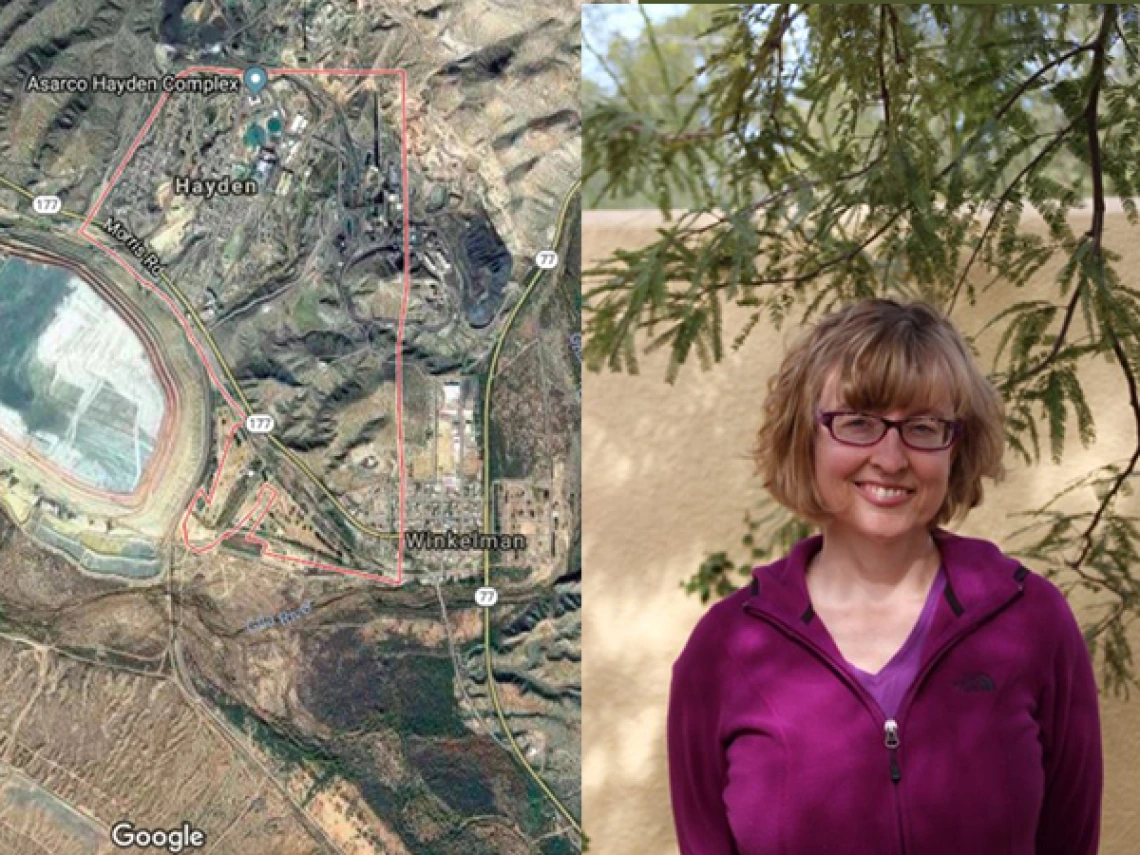Assessing Lead Exposure in Children at an Alternative Superfund Site

Former University of Arizona Superfund Research Center (UA SRC) trainee Dominika Heusinkveld graduated in May of 2020 with a dual Masters degrees from the UArizona Department of Environmental Science and the School of Journalism. She also acquired a prior degree in Public Health to gain skills to improve community and individual health. Additionally, Dominika Heusinkveld is a former Family Medicine physician and worked for 12 years on the Navajo Reservation in Arizona. She is very interested in science and health communication and in translating topics in biological, environmental, and medical sciences to the general public. She is currently working for the Arizona Daily Star (#This is Tucson Newsletter).
Dominika Heusinkveld’s latest publication at Exposure and Health assesses children’s lead exposure at an Alternative Superfund site in Hayden-Winkelman, Arizona where lead exceedances in air and soil have been measured in the past 20 years.
In this work, the U.S. Environmental Protection Agency’s Integrated Exposure Uptake Biokinetic (IEUBK) model was used to estimate Hayden-Winkelman children’s (age 6 months to 7 years) blood lead levels (BLLs) using site-specific lead concentrations measured in indoor and outdoor air, soil, indoor dust, and drinking water. Using site-specific values in the model, the results demonstrated that lead ingested via indoor dust was the major contributor to children’s BLLs.
The research team also evaluated the values used by a state agency’s airborne lead risk forecast program to determine whether their forecasting program is useful in protecting children’s public health. The output of the IEUBK model overestimated actual BLLs of children sampled in the community. The IEUBK model was particularly sensitive to high indoor dust levels, and these site-specific measures increased modeled BLL values.
This finding is significant because the IEUBK model is used worldwide in communities with industrial contamination. This study confirmed that the chief contributor to lead exposure in children is household dust. Thus, for lead exposure risk reduction, agencies working at Superfund sites should focus efforts on decontaminating outdoor soil and dust and indoor lead decontamination.
Publication:
Heusinkveld, D., Ramírez-Andreotta, M.D., Rodríguez-Chávez, T. et al. Assessing Children’s Lead Exposure in an Active Mining Community Using the Integrated Exposure Uptake Biokinetic Model. Expo Health (2021). https://doi.org/10.1007/s12403-021-00400-0

